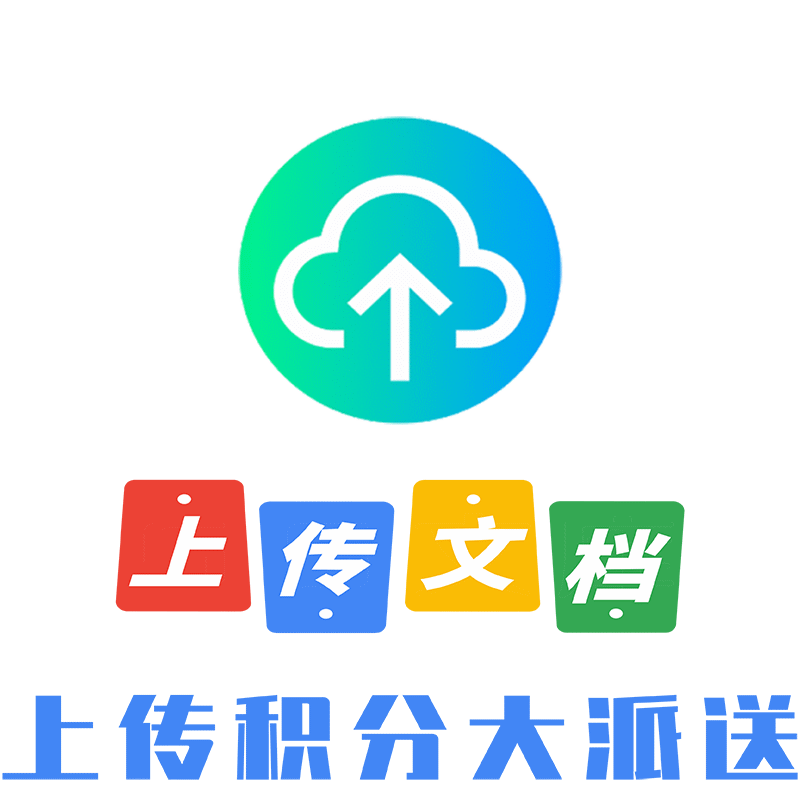JIT+Implementation+Manual+-+3
VIP免费
3.0
2024-06-30
0
0
5.16MB
159 页
1库币
海报
投诉举报
JIT Implementation Manual
The Complete Guide to
Just-in-Time Manufacturing
Second Edition
Volume 3
JIT Implementation Manual
Flow Manufacturing –
Multi-Process Operations and Kanban
The Complete Guide to
Just-in-Time Manufacturing
Second Edition
Volume 3
HIROYUKI HIRANO
Originally published as Jyasuto in taimu seisan kakumei shido manyuaru copyright © 1989 by JIT Management Laboratory Company, Ltd., Tokyo,
Japan.
English translation copyright © 1990, 2009 Productivity Press.
CRC Press
Taylor & Francis Group
6000 Broken Sound Parkway NW, Suite 300
Boca Raton, FL 33487-2742
© 2009 by Taylor & Francis Group, LLC
CRC Press is an imprint of Taylor & Francis Group, an Informa business
No claim to original U.S. Government works
Printed in the United States of America on acid-free paper
10 9 8 7 6 5 4 3 2 1
International Standard Book Number-13: 978-1-4200-9026-0 (Softcover)
This book contains information obtained from authentic and highly regarded sources. Reasonable efforts have been made to publish reliable data and
information, but the author and publisher cannot assume responsibility for the validity of all materials or the consequences of their use. The authors and
publishers have attempted to trace the copyright holders of all material reproduced in this publication and apologize to copyright holders if permission
to publish in this form has not been obtained. If any copyright material has not been acknowledged please write and let us know so we may rectify in any
future reprint.
Except as permitted under U.S. Copyright Law, no part of this book may be reprinted, reproduced, transmitted, or utilized in any form by any electronic,
mechanical, or other means, now known or hereafter invented, including photocopying, microfilming, and recording, or in any information storage or
retrieval system, without written permission from the publishers.
For permission to photocopy or use material electronically from this work, please access www.copyright.com (http://www.copyright.com/) or contact
the Copyright Clearance Center, Inc. (CCC), 222 Rosewood Drive, Danvers, MA 01923, 978-750-8400. CCC is a not-for-profit organization that provides
licenses and registration for a variety of users. For organizations that have been granted a photocopy license by the CCC, a separate system of payment
has been arranged.
Trademark Notice: Product or corporate names may be trademarks or registered trademarks, and are used only for identification and explanation with-
out intent to infringe.
Visit the Taylor & Francis Web site at
http://www.taylorandfrancis.com
and the CRC Press Web site at
http://www.crcpress.com
v
Contents
Volume 1
1 Production Management and JIT Production Management ...... 1
Approach to Production Management .................................................. 3
Overview of the JIT Production System ............................................... 7
Introduction of the JIT Production System ..........................................12
2 Destroying Factory Myths: A Revolutionary Approach ........... 35
Relations among Sales Price, Cost, and Profit......................................35
Ten Arguments against the JIT Production Revolution ........................40
Approach to Production as a Whole ...................................................44
Volume 2
3 “Wastology”: The Total Elimination of Waste .........................145
Why Does Waste Occur? ...................................................................146
Types of Waste ................................................................................. 151
How to Discover Waste ....................................................................179
How to Remove Waste .....................................................................198
Secrets for Not Creating Waste ..........................................................226
4 The “5S” Approach .................................................................237
What Are the 5S’s? ............................................................................237
Red Tags and Signboards: Proper Arrangement and
Orderliness Made Visible ..................................................................265
The Red Tag Strategy for Visual Control ...........................................268
The Signboard Strategy: Visual Orderliness ......................................293
Orderliness Applied to Jigs and Tools ...............................................307
vi ◾ Contents
Volume 3
5 Flow Production .....................................................................321
Why Inventory Is Bad .......................................................................321
What Is Flow Production? .................................................................328
Flow Production within and between Factories ................................332
6 Multi-Process Operations ...................................................... 387
Multi-Process Operations: A Wellspring for Humanity on the Job .....387
The Difference between Horizontal Multi-Unit Operations and
Vertical Multi-Process Operations .....................................................388
Questions and Key Points about Multi-Process Operations ...............393
Precautions and Procedures for Developing Multi-Process
Operations ........................................................................................404
7 Labor Cost Reduction .............................................................415
What Is Labor Cost Reduction? ......................................................... 415
Labor Cost Reduction Steps ..............................................................419
Points for Achieving Labor Cost Reduction .......................................422
Visible Labor Cost Reduction ............................................................432
8 Kanban ................................................................................. 435
Differences between the Kanban System and Conventional Systems ...435
Functions and Rules of Kanban .......................................................440
How to Determine the Variety and Quantity of Kanban ..................442
Administration of Kanban ................................................................447
9 Visual Control ........................................................................ 453
What Is Visual Control? .....................................................................453
Case Study: Visual Orderliness (Seiton) .............................................459
Standing Signboards .........................................................................462
Andon: Illuminating Problems in the Factory ...................................464
Production Management Boards: At-a-Glance Supervision ................470
Relationship between Visual Control and Kaizen .............................471
Index ............................................................................................. I-1
About the Author ......................................................................... I-31
Contents ◾ vii
Volume 4
10 Leveling ..................................................................................475
What Is Level Production?.................................................................475
Various Ways to Create Production Schedules ..................................477
Differences between Shish-Kabob Production and Level Production ....482
Leveling Techniques .........................................................................485
Realizing Production Leveling ...........................................................492
11 Changeover ............................................................................ 497
Why Is Changeover Improvement (Kaizen) Necessary? ....................497
What Is Changeover? ........................................................................498
Procedure for Changeover Improvement ..........................................500
Seven Rules for Improving Changeover ............................................532
12 Quality Assurance ................................................................. 541
Quality Assurance: The Starting Point in Building Products .............541
Structures that Help Identify Defects ................................................546
Overall Plan for Achieving Zero Defects ...........................................561
The Poka-Yoke System ......................................................................566
Poka-Yoke Case Studies for Various Defects ......................................586
How to Use Poka-Yoke and Zero Defects Checklists .........................616
Volume 5
13 Standard Operations ............................................................. 623
Overview of Standard Operations ....................................................623
How to Establish Standard Operations .............................................628
How to Make Combination Charts and Standard Operations Charts ....630
Standard Operations and Operation Improvements ..........................638
How to Preserve Standard Operations ..............................................650
14 Jidoka: Human Automation ................................................... 655
Steps toward Jidoka ..........................................................................655
The Difference between Automation and Jidoka ..............................657
The Three Functions of Jidoka .........................................................658
Separating Workers: Separating Human Work from Machine Work ....660
Ways to Prevent Defects ...................................................................672
Extension of Jidoka to the Assembly Line .........................................676
viii ◾ Contents
15 Maintenance and Safety ........................................................ 683
Existing Maintenance Conditions on the Factory Floor .....................683
What Is Maintenance? .......................................................................684
CCO: Three Lessons in Maintenance ................................................689
Preventing Breakdowns ....................................................................683
Why Do Injuries Occur?....................................................................685
What Is Safety? ................................................................................. 688
Strategies for Zero Injuries and Zero Accidents .................................689
Volume 6
16 JIT Forms ...............................................................................711
Overall Management ........................................................................ 715
Waste-Related Forms ........................................................................730
5S-Related Forms .............................................................................. 747
Engineering-Related Forms ...............................................................777
JIT Introduction-Related Forms .........................................................834
321
5Chapter
Flow Production
Why Inventory Is Bad
Why Does Inventory Accumulate?
Every year, when heavy rains hit the forest, the streams
and rivers suddenly swell and sometimes overflow. Most
river flooding is caused by localized downpours. The rivers
become wider and sometimes adjacent forks are reunited as
a single large river.
In factories, goods and materials should flow in the fac-
tory much as water flows in a river. But things tend to accu-
mulate. We could say that the “river”—the flow of in-process
inventory—tends to “flood.” Needless to say, it would be
better if this river of in-process inventory flowed smoothly
and briskly. The following are some of the main reasons for
such “flooding ” in factories.
Reason 1: Inventory flow is behind the times
It has been a long time since large lot production gave
way to the era of wide-variety, small lot production, but
some manufacturers still have not caught up. They try to
use the old “shish-kabob” production schedules to turn
out orders for a wide assortment of product models in
small lots and, not surprisingly, “floods” often occur at
certain processes.
322 ◾ JIT Implementation Manual: Volume 3
Reason 2: Old habits are hard to change
Some factory managers understand quite well that this
is the era of wide variety and small lots. But they do not
have the energy and courage to let go of old familiar ways
and make the necessary changes. Rather than trying to
“go with the flow,” they are just trying to stay afloat for
the years remaining until their retirement age.
Reason 3: Unbalanced capacity brings unbalanced inventory
Inventory shoots through the “rapids” of high-capacity
processes, but it naturally gets backed up when it reaches
processes having lower capacity.
Reason 4: Inventory is sometimes gathered from several
processes
Some processes, such as painting and rinsing processes,
often use large equipment that can handle in-process inven-
tory sent from several processes. Naturally, the in-process
inventory from several processes accumulates at such
large equipment before being processed by it.
Reason 5: Inventory must wait to be distributed from large
processes
This is what happens at the downstream side of the large
equipment described under Reason 4. Each kind of pro-
cessed inventory must wait its turn to be sent on to one
of several downstream processes.
Reason 6: Inventory must wait for a busy operator
Sometimes operators work sequentially on a number of
machines. We call this “caravan” operations. In-process
inventory tends to gather at each machine until the oper-
ator gets a chance to process it. In other words, inventory
gathers wherever the operator is not.
Reason 7: Inventory accumulates when operators dislike
changeovers
Inventory tends to gather at presses and other processes
where changeover is regarded as arduous work. The
operators would much rather do fewer changeovers by
handling large lots.
Flow Production ◾ 323
Reason 8: Inventory accumulates in factories that have
“end-of-the-month rushes”
This tends to happen at factories that have monthly
volumes to meet. The assembly line is especially busy
during the last five days of the month. In fact, workers
from all over the factory are called over to the assembly
line for the end-of-the-month rush. By the middle of the
month, the factory is chock-full of in-process inventory,
lined up to be assembled during this rush period.
Reason 9: Inventory accumulates due to faulty production
scheduling
Sometimes production planners are not knowledgeable
enough about inventory and include some noninventory
items as inventory. Such misunderstandings can lead to
incorrect inventory distribution planning when drawing
up production schedules.
Reason 10: Inventory accumulates when people forget to
revise standards
Once standards are set for lead-time, lot sizes, or accept-
able defect rates, people forget to revise them. Soon
workshops start producing extra goods in anticipation
of a certain percentage of defectives. Surplus production
means surplus inventory.
Reason 11: People tend to store up “ just-in-case” inventory
Things do not always go as planned. Sometimes, new
developments in a company’s business activities will
require a sudden change in production scheduling. All
company divisions—from sales to management, purchas-
ing, and manufacturing—like to keep a “safety margin”
of extra inventory around just in case a sudden change
of plans occurs. “Safety” is a misleading term here. What
these inventory buffers provide is not safety, but security
for the people in charge.
Reason 12: Inventory accumulates due to seasonal adjustments
No product sells at the same rate all year-round. Some
sell in cycles, and others have distinct seasons. No one in
摘要:
展开>>
收起<<
JITImplementationManualTheCompleteGuidetoJust-in-TimeManufacturingSecondEditionVolume3JITImplementationManualFlowManufacturing–Multi-ProcessOperationsandKanbanTheCompleteGuidetoJust-in-TimeManufacturingSecondEditionVolume3HIROYUKIHIRANOOriginallypublishedasJyasutointaimuseisankakumeishidomanyuarucop...
温馨提示:66文库网--作为在线文档分享平台,一直注重给大家带来优质的阅读体验;让知识分享变得简单、有价值;海量文档供您查阅下载,让您的工作简单、轻松而高效!
1. 未经权益所有人同意不得将文件中的内容挪作商业或盈利用途。
2. 66文库网仅提供信息存储空间,仅对广大用户、作者上传内容的表现方式做保护处理,对上传分享的文档内容本身不做任何修改或编辑,并不对下载的任何内容负责。
3. 广大用户、作者上传的文件中如有侵权或不适当内容,请与我们联系,我们立即纠正。
4. 本站不保证、不承担下载资源内容的准确性、安全性和完整性, 同时也不承担用户因使用下载资源对自己和他人造成任何形式的伤害或损失。
相关推荐
-
168种常用化学品MSDSVIP免费

 2024-07-28 35
2024-07-28 35 -
2024年安全生产月消防知识竞赛活动策划二(61页)VIP免费

 2024-09-13 5
2024-09-13 5 -
21特种作业安全生产基本知识VIP免费

 2024-09-15 5
2024-09-15 5 -
【制度】防洪防汛安全管理制度(13页)VIP免费

 2024-10-04 2
2024-10-04 2 -
制浆车间一般安全操作规程VIP免费

 2024-10-05 3
2024-10-05 3 -
值班电工安全技术操作规程VIP免费

 2024-10-05 3
2024-10-05 3 -
21特种作业安全生产基本知识VIP免费

 2024-10-07 7
2024-10-07 7 -
小微企业安全生产标准化文件资料汇编(全套最新、最全、最专业、最易操作、最符合实际)VIP免费

 2024-10-07 11
2024-10-07 11 -
企业级活动客户投诉处理预案

 2024-10-08 16
2024-10-08 16 -
三农公共服务建设方案

 2024-10-16 11
2024-10-16 11
分类:管理文献
价格:1库币
属性:159 页
大小:5.16MB
格式:PDF
时间:2024-06-30












